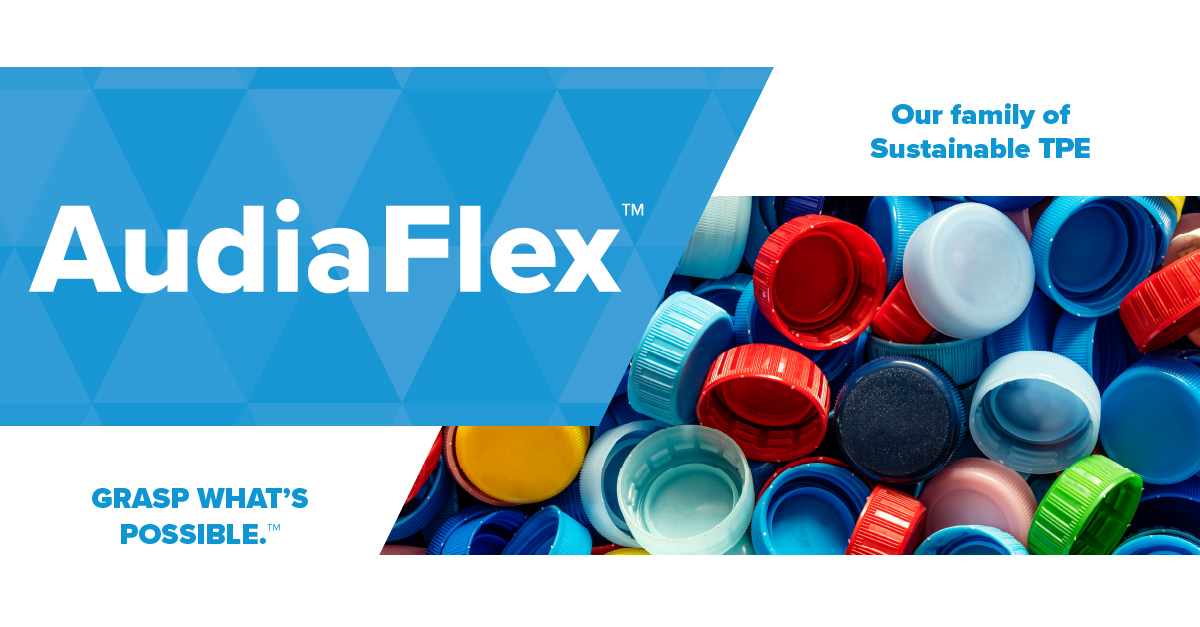We know the value of sustainability.
Our sustainability strategy is rooted in the development of products that give back environmentally. There are 5 technology categories where we focus to help our customers meet their sustainability goals. Product innovation is about doing the right thing and driving preference for your products. Sometimes it's doing more with less because ultimately, sustainability creates value.
Contact us below for technical inquiries of AudiaFlex™ and for the opportunity to see our carbon ranching in action.
Sustainable Product Strategies
Where you decide the best for your sustainable product needs
REcycled TPE - AudiaFlex™
Whether it's mechanical recycling or bio-based resin, reduce your CO2 footprint while achieving recycling rate commitments. Each recycled and bio-base polymer is custom-tailored to meet specific application requirements.
![]()
Recycled and Bio-Based Oils
Integrate renewable content into your product for lower density and a lower carbon footprint. It's a sustainable way to reduce the use of virgin resins and use materials that are renewable and better for the earth. And with the ability to customize color, your final product has a multitude of sustainability benefits.
![]()
Bio-Mass Fillers
Integrate renewable content into your product for lower density and a lower carbon footprint. It's a sustainable way to reduce the use of virgin resins and use materials that are renewable and better for the earth. And with the ability to customize color, your final product has a multitude of sustainability benefits.
![]()
Lightweighting
Do more with less while still maintaining the physical properties of your product. Light weighting is the easiest way to make a sustainable impact, as our techniques replace polyamides, styrenics, and other products to lower carbon footprint. Products designed with this technology are configured to be thin-walled.
![]()
Recycled Fillers
Keep material out of the landfill and give it a second life. Our recycled fillers utilize otherwise discarded materials for new products, reducing the final product's overall CO2 footprint.
![]()

